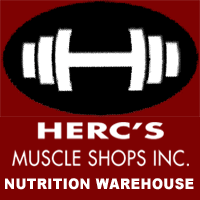Food gives us energy and fuels physical activity. Not eating enough can cause a drop in energy and endurance levels and, in the world of sports, can lead to painful losses. This is why athletes learn quickly to pack that extra energy bar just in case.
But food is not only good as energy sources to our muscles. They also hold substances that promote our health, boost our immunity to sicknesses, promote tissue repair, protect cells from damage, protect against age-related cognitive decline and increase resistance to cancers, and other illnesses, all of which are important to maintaining good performance and longevity in sports. These protective substances are commonly known as phytochemicals.
Phytochemicals means "chemicals from plants." Vegetables and fruits therefore are excellent sources.
Color means protection
Colorful vegetables and fruits have high levels of phytochemicals. In most cases, colorful skins of fruits and vegetables have the most concentrated source of protective nutrients.
RED
Red fruits maintains heart health, memory function, lowers risk to some cancers, and ensures urinary tract health. Lycopene and anthocyanins are available in red fruits and vegetables. Lycopede reduces the risk of several types of cancer, heart and lung disease. Anthocyanins helps protect against heart disease by preventing blood clots. Both may slow the cell aging process.
ORANGE / YELLOW
Beta-carotene is abundant in orange and yellow substances. It is an antioxidant that helps reduce the risk of cancer and heart disease, maintain eyesight, help boost the immune system, and promote repair of damaged DNA. With Vitamin C, Bioflavonoids which are also contained in orange and yellow fruits and vegetables, help reduce the risk of cancer, strengthen bones and teeth, heal wounds, keep skin healthy and lower the risk of heart attacks.
BLUE / P URPLE
Anthocyanins and Phenols make up blue and purple fruits and vegetables. Research says they may help reduce your risk of cancer, heart disease, and Alzheimer's and may have anti-aging effects.
GREEN
Green fruits and vegetables are among the best sources of lutein. Lutein helps reduce the risk of cataracts and mascular degeneration, which can cause loss of vision. Green vegetables are also rich in sulforaphane, isocyanate and indoles which hamper the action of carcinogens.
WHITE
Allicin, which are found in garlic, leeks, and onions, helps control blood pressure and cholesterol. It looks like it also increases the body's ability to fight infection. Cauliflower contains sulforaphane, and mushrooms contain selenium. Both are also cancer-fighting.
Because they protect your body from injuries, diseases and untimely aging, colorful vegetables and fruits must be first in mind when buying food to maintain good sports nutrition.
Essentials for fast recovery
Proper recovery is also a main concern in sports nutrition. Sufficient rest and sleep allows the body's systems to recuperate from training stress and makes you stronger and faster. Training gains can be maximized, recovery process speeded up and performance enhanced by correct food and liquid consumption after workout.
The amount of food you need depends on the extent of the depletion of glycogen stores. How much food you need depends on the extent that your activity depleted your glycogen stores.
For a minimum of 2 hours of exercise, sports nutrition experts recommend around 1-1.5 grams of carbohydrate per kilogram of body weight within 15 minutes after cessation of exercise and every two hours until your next complete meal. That's around 50-120 grams or 200-480 calories of carbohydrates for most athletes.









